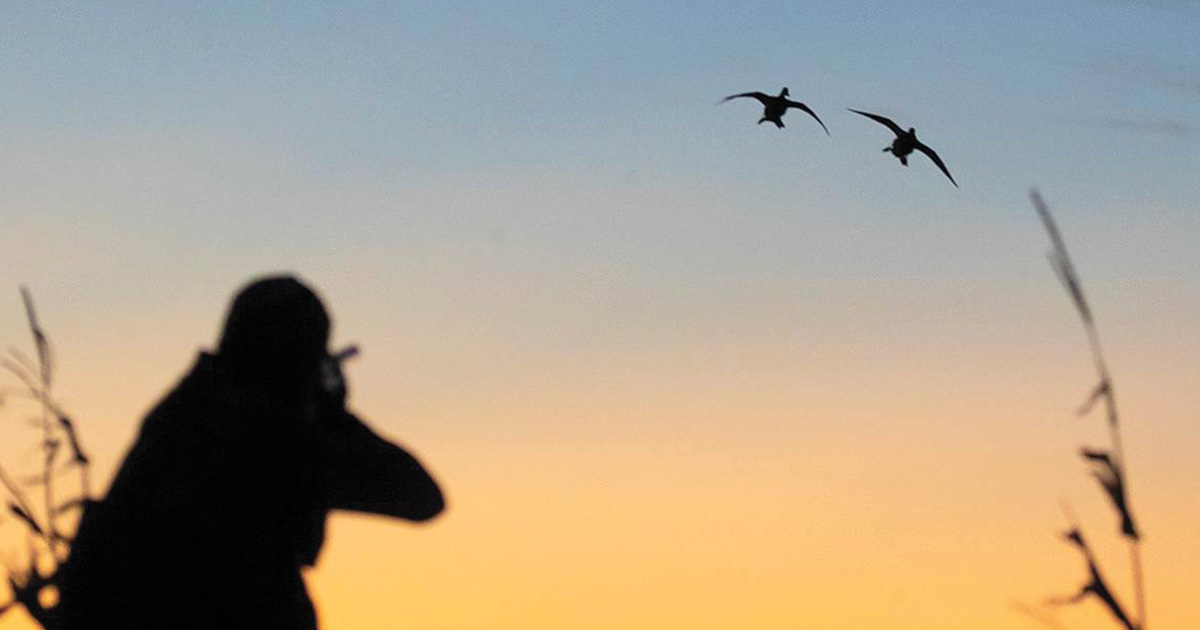Waterfowler's World: Know Your Ducks
DU biologists offer practical advice for improving your waterfowl identification skills
DU biologists offer practical advice for improving your waterfowl identification skills
By Bill Buckley

Because bag limits are broken down by species and sometimes sex, waterfowlers have to be proficient at identifying ducks. That's not always easy. It takes an experienced eye, especially in low-light conditions and when flocks suddenly appear out of nowhere.
Here are some helpful tips hunters can use to sharpen their ID skills.
Dr. John Coluccy, director of conservation planning in Ducks Unlimited's Great Lakes/Atlantic Region, offers this helpful tip: "You can often narrow down the most common species you're likely to see by the habitat you're in," he says. "For instance, if you're hunting a forested wetland, chances are you'll see more dabbling ducks, like woodies and mallards, than divers, like canvasbacks and scaup." Conversely, areas of big, open water aren't optimal habitat for dabbling ducks.
"Divers have shorter, more compact bodies, stouter necks, and tend to fly straight and fast," Coluccy says, "whereas most dabblers move slower and more methodically. You'll also notice lots of black and white on divers, particularly on cans, scaup, and ringnecks."
In flight, mallard drakes and hens can sometimes be difficult to differentiate, especially in early-season plumage. Focus on the darkness and definition of the breast. Drakes typically have darker, more delineated breasts, but that's not always foolproof.
"Hunters often misidentify drake ringnecks and scaup until the birds are close enough to make out the scaup's solid blue bill or the ringed bill of the ringneck," Coluccy says. "Cans and redheads also might look similar from afar but can be distinguished by their bills when they get closer—the redhead's bill is light blue, and the canvasback's is black and triangular."
According to Dr. Mike Brasher, a DU waterfowl scientist based in Tennessee, the pace of a duck's wingbeats is another useful identifier. "In general, divers have much faster wingbeats than dabblers," he explains, "and larger divers like canvasbacks and redheads have longer, more pointed wings that are built for covering long distances over open water. Dabblers, which have to navigate around trees, typically have broader and more rounded wings that allow for greater maneuverability. But there are exceptions. Ringnecks have slightly more rounded wingtips, allowing them to use tighter, wooded environments. Also, teal certainly appear to have faster wingbeats than most dabblers, although that could be due to their small size."
Duck vocalizations can also be a huge help. Learn what each duck sounds like and you can instantly identify many species, and sometimes even distinguish hens from drakes. When a single mallard circling overhead quacks, you know it's a hen. If it makes a softer, raspy whine, it's a drake.
Identifying ducks at first light and on cloudy days can be difficult. This is when the size of a bird, the length of its neck, and the shape of its profile, bill, and tail can help you make a positive ID. "Woodies, for example, have a telltale square tail," Brasher says, "whereas the long, pointed tails of pintails, even on hens, are unmistakable. Wigeon and gadwalls also have distinctive tails. Bill profiles can also be dead giveaways. There's no mistaking the sloped bill of a canvasback or the spoon-shaped bill of a shoveler. White on wings can also help in low light. Gadwalls, for instance, have white on their speculums, whereas wigeon have white shoulder patches."
Hunters often have to use a combination of indicators to tell one species from another, and it takes lots of practice and experience to improve your skills. The more you study birds in flight and learn to decipher distinguishing features, the more confident you'll become.
Visit DU's Waterfowl ID.